
Marketing of fashion accessories
Fashion accessories, or style adornments, have been integral to the evolution of fashion, symbolizing power and status since the times of ancient civilizations. With the democratization of fashion in the 20th century, brands like Gucci broadened their reach beyond clothing, elevating accessories from functional items to lifestyle products.

The Fashion Accessories Market and History
The global fashion accessories market reached an impressive $225.3 billion valuation in 2019, according to Statista. This reflects the widespread appeal of trending embellishments, which span high-end offerings like Hermes’s silk scarves to more affordable, yet stylish pieces like H&M’s jewelry line. The industry caters to a variety of consumers, offering options for different budgets and tastes.
The rise of sustainability has significantly influenced this market. Stella McCartney and brands like Soko, with their upcycled jewelry, have proven that eco-conscious fashion can be stylish, driving a shift towards sustainable accessories.
The advent of the digital age has also reshaped the marketing of fashion accessories, opening new avenues for growth. Challenges such as the recent pandemic have further highlighted the industry’s resilience, as it adapts to changes in societal norms and needs, like incorporating face masks into fashion.
In essence, the evolution of fashion accessories is an intriguing journey that mirrors societal and cultural shifts. As the future of fashion embraces individuality and sustainability, these style accents will continue to shape the way we express ourselves and interpret the world around us. Fashion, after all, extends beyond clothing. It’s intertwined with our ideas, our lifestyle, and our perception of the world.
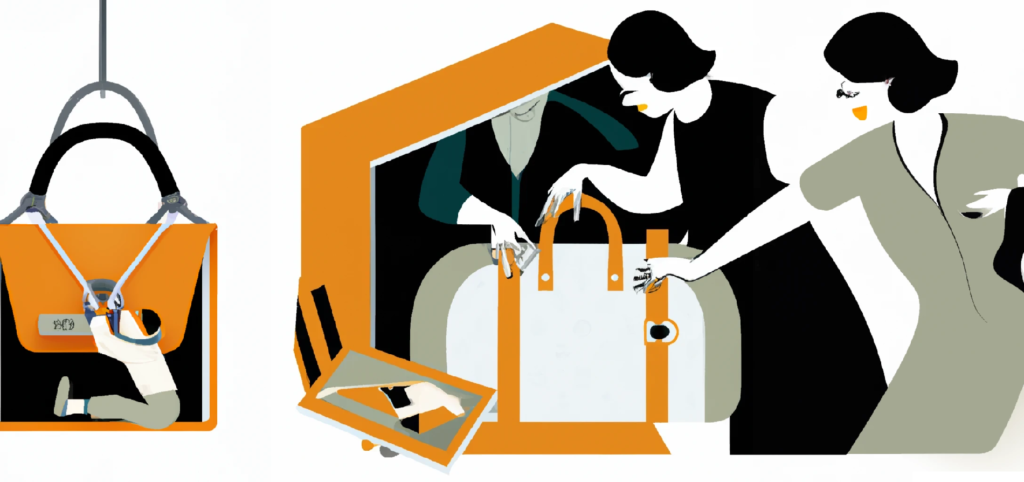
Fashion Accessories Curious Facts
Unveiling a world of style and creativity, fashion accessories or ‘style adornments’ breathe life into our ensembles. These dynamic pieces are rich with stories and peculiarities that make them far more than just add-ons to an outfit. Let’s journey into the heart of these chic complements and uncover five curious facts that make them a beloved part of our everyday lifestyle.
The Timeless Tale of Sunglasses: The quintessential cool accessory, sunglasses, were not always about style. Inuit people used primitive versions, snow goggles, made from flattened walrus ivory with narrow slits to protect their eyes from sun reflection off the snow. Centuries later, sunglasses have evolved into a fashion statement, from Ray-Ban’s classic aviator to Gucci’s oversized frames.
Birkin Bag – A Chance Encounter: The iconic Birkin bag from Hermès has an intriguing origin story. Born from a chance encounter between actress Jane Birkin and Jean-Louis Dumas, the then Hermès chief executive, on a flight, this masterpiece of a handbag is now a symbol of luxury. Jane was lamenting the lack of a chic, yet practical bag, leading to Dumas creating one for her. It’s interesting how a chance conversation revolutionized the marketing of fashion accessories!
Tie – From Utility to Sophistication: Ties have had a curious journey from utilitarian cloth to a symbol of elegance. Originating as neckwear for Croatian mercenaries in the 17th century (hence the name ‘cravat’), the tie has evolved into an indispensable part of a gentleman’s wardrobe. From the boardroom to the Met Gala, ties from brands like Brooks Brothers and Armani add sophistication to any attire.
The Evolution of the Brooch: The brooch, a decorative jewelry item designed to be attached to garments, traces its history back to the Bronze Age. These pieces have stood the test of time, with brands like Chanel famously incorporating brooches in their collections. Coco Chanel’s love for camellias inspired the signature Chanel Camellia brooch.
Diamonds are Forever, but So is Costume Jewelry: In the 1920s, Coco Chanel introduced costume jewelry to complement her fashion line. Contrary to the norm, these pieces were not meant to flaunt wealth but to accentuate style. This revolutionized the industry, making fashion jewelry an affordable and desirable style accent.
Uncovering these fascinating facts illuminates the rich tapestry of style adornments. From chance encounters to practical needs, these curious origins highlight how fashion accessories have evolved over time, shaping and being shaped by societal and cultural changes. They’re not merely details of an outfit, but storied elements that add depth to our style narrative.
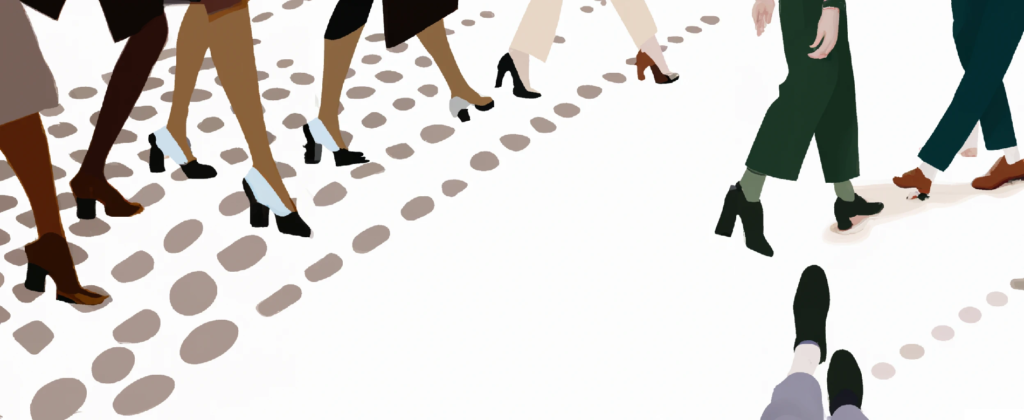
Five Megatrends Shaping the Fashion Accessory Market
The fashion accessory market is a vibrant field where style meets innovation. It is a territory shaped by trends that often reflect broader societal and cultural changes. In this article, we delve into five megatrends currently transforming the marketing of fashion accessories, enhancing their status from simple style accents to lifestyle products.
Sustainability and Ethical Fashion: In an era where consumers are becoming increasingly conscious of their ecological footprint, sustainable and ethical fashion accessories have taken centre stage. Brands like Veja and Soko are meeting the demand for ‘green’ style, offering ethically-sourced footwear and upcycled jewelry respectively. This shift towards sustainability is revolutionising the accessory market, making eco-friendly style an integral part of a mindful lifestyle.
Rise of Gender-Neutral Accessories: Breaking away from traditional gender norms, fashion is increasingly embracing a more fluid approach to style. Brands like Gucci and JW Anderson are creating gender-neutral accessories, from handbags to necklaces, allowing for self-expression beyond the binary. This inclusive approach broadens the fashion accessory market, reflecting a society that values individuality and freedom of expression.
Tech-Infused Fashion: With the digital revolution, technology and fashion have become intertwined. From Ringly’s smart rings to Fitbit’s chic fitness trackers, tech-infused accessories are gaining popularity. These pieces showcase how the fashion accessory market is innovating, fusing style with functionality to meet the modern consumer’s lifestyle needs.
The Power of Personalization: Today’s consumers seek to express their unique identity through their fashion choices.
Brands like Zara and H&M are tapping into this desire for uniqueness, offering personalized accessories like monogrammed scarves and initial necklaces. This trend underlines the transition of accessories from generic style additions to personalised lifestyle products.
E-commerce Boom: The rise of online shopping has transformed the fashion accessory market. Brands are leveraging digital platforms to reach a global audience, enhancing the consumer shopping experience with user-friendly websites, AI-powered recommendations, and virtual try-on features. This digital transformation underscores how the marketing of fashion accessories is evolving to meet the shifting consumer shopping habits.
These megatrends underline the dynamic nature of the fashion accessory market, reflecting changing consumer attitudes and societal shifts. They emphasise the power of style adornments as tools of self-expression and lifestyle products that resonate with the modern consumer’s values and needs. As these trends shape the industry, they reinforce the belief that fashion is not just about appearance but about reflecting who we are and how we live.
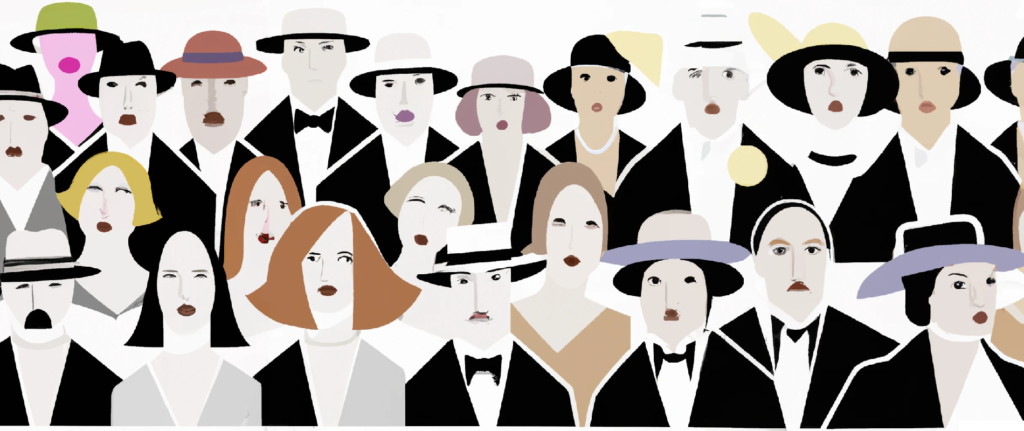
Consumer Behaviour in Purchasing Fashion Accessories
Understanding consumer behaviour is integral to the successful marketing of fashion accessories. Today, purchasing decisions go beyond the basics of need and affordability; they’re closely linked to individual cognitive processes and psychographic factors. Let’s delve into this intricate relationship and see how it impacts the style adornments market.
The Cognitive Factor
Cognitive processes, including perception, memory, and thinking, significantly impact our buying decisions. For example, a consumer might associate Ray-Ban with quality sunglasses due to successful branding, prompting them to choose Ray-Ban over other brands.
Consumer cognition also impacts how we respond to new products. The popularity of Apple’s AirPods, despite initial scepticism, highlights this. While AirPods were initially considered an unnecessary accessory, Apple’s strategic marketing and the product’s sleek design shifted consumer perception, making them a must-have lifestyle product.
The Psychographic Dimension
Psychographics encompass consumer’s personality traits, values, attitudes, interests, and lifestyle. In the context of fashion accessories, these factors greatly influence the decision-making process.
Consider the popularity of sustainable brands like Veja and Soko. Their success can be attributed to a growing consumer consciousness about sustainability and ethical consumption. These consumers seek more than a stylish accessory; they desire a lifestyle product that aligns with their values.
Similarly, the resurgence of vintage accessories like brooches and berets can be linked to the nostalgic and individualistic tendencies of consumers. Brands like Gucci, renowned for their vintage-inspired collections, have successfully tapped into these sentiments.
Personalisation, too, resonates with the consumer’s need for self-expression. Brands offering customisable accessories, like Pandora with their charm bracelets, appeal to consumers who want their fashion choices to reflect their individual identity.
Influence of Social Media
Social media platforms also play a pivotal role in shaping consumer behaviour. Influencer endorsements, user-generated content, and viral trends on platforms like Instagram significantly impact consumer preferences. The success of the Dior Saddle Bag, largely propelled by influencer marketing, illustrates this phenomenon.
Understanding consumer behaviour from a cognitive and psychographic perspective enables brands to tailor their offerings and marketing strategies effectively. As the fashion accessory market continues to evolve, understanding the consumer’s mind will be key to creating style adornments that are not just fashion statements but reflect their lifestyle and values.

Fashion Accessories Buyer Personas
In the kaleidoscopic universe of fashion accessories, capturing the heartbeat of the consumer is paramount. Constructing comprehensive buyer profiles, such as our dapper friend, Vintage Vincent, can dramatically enrich the marketing approach for these alluring style adornments. So, let’s step into the enchanting world of Vincent and his contemporaries.
Vintage Vincent: Hailing from the bustling streets of London, Vincent, our creative director of 35 summers, has a soft spot for fashion echoing yesteryears. His fashion universe orbits around vintage influences, making the ornate Gucci brooch or a timeless Borsalino hat more than just style enhancers; they become expressions of his lifestyle. Brands evoking a bygone era like Gucci and Burberry are harmonious with Vincent’s love for the past.
Sustainable Sophia: Berlin’s own Sophia, an environmentalist and a crusader at 28, weaves sustainability into the fabric of her fashion choices. Her loyalty lies with brands like Veja and Soko, icons of ethical sourcing and upcycling. Sophia’s selection mirrors a segment that seeks harmony between their sartorial choices and their eco-conscious beliefs.
Tech-Savvy Tom: Tom, our 32-year-old tech entrepreneur residing in San Francisco, values a marriage of fashion and technology in his accessories. Brands intertwining style and innovation, such as Ringly with their smart rings and Fitbit with their chic fitness trackers, perfectly align with Tom’s lifestyle.
Personalized Penelope: Penelope, our Milanese fashion blogger of 25 springs, loves a canvas of self-expression in her accessories. Brands offering a touch of personalization, such as Pandora with their bespoke charm bracelets or Zara with their monogrammed scarves, capture Penelope’s heart. Her preferences echo a market longing for individuality in their style choices.
On-the-Go Olivia: Olivia, a 30-year-old Sydney-based consultant, values accessories that are attuned to her fast-paced lifestyle. She’s drawn to versatile yet stylish accessories, such as Michael Kors’ tote bags or Apple’s AirPods. Olivia represents a tribe that seeks style accompaniments merging seamlessly with their dynamic lives.
Decoding these diverse consumer profiles can powerfully guide the marketing of fashion accessories. Each persona portrays a unique consumer segment, spotlighting the spectrum within the accessory market. Brands must address these multifaceted needs, curating accessories that mirror their customers’ lives and identities. From a vintage hat for Vincent to a functional tote for Olivia, it transcends being just an accessory – it’s a lifestyle product, a story of the wearer’s life.
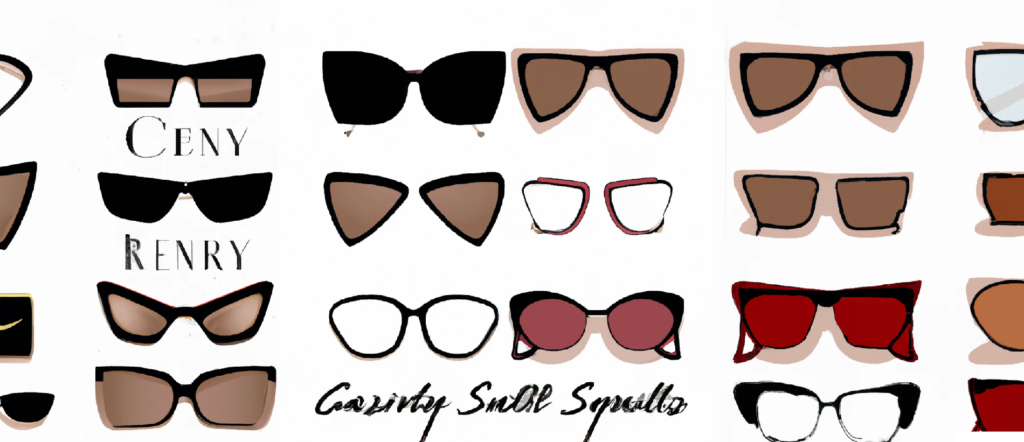
Fashion Accessories Innovative Brands
In the world of fashion accessories, innovation is key. Brands that push the boundaries and offer something unique can rise above the competition. Here are five brands making waves with their innovative approach to style embellishments.
Ringly: Merging technology with style, Ringly is the epitome of innovative accessories. Their smart rings not only look chic but also offer functionality by syncing with your smartphone. Each ring vibrates to alert you of calls, messages, or notifications, ensuring you never miss an important update. Ringly’s product line showcases how accessories can be more than just a style statement; they can be practical, tech-forward lifestyle products.
TOMS Shoes: TOMS Shoes made their mark with their innovative “One for One” business model. For each pair of shoes sold, the company donates a pair to a child in need. With their mix of style and social consciousness, TOMS’ canvas slip-ons and espadrilles are more than just footwear; they’re lifestyle products making a positive global impact.
BaubleBar: The brand offers high-quality fashion jewelry at an accessible price point, disrupting the traditional jewelry market. Their constantly updated collections ensure customers always have new, trendy pieces to choose from, like statement earrings or layering necklaces. The success of BaubleBar showcases the power of offering style-conscious consumers affordable yet fashionable adornments.
Warby Parker: The eyewear brand revolutionized the industry with their home try-on program. Customers can select five frames to be shipped to their home for free, try them on, and choose their favorite. The stylish frames, from classic tortoiseshell to bold, colorful designs, are testament to Warby Parker‘s understanding of the need for variety and individuality in fashion accessories.
Stella McCartney: McCartney‘s brand is synonymous with sustainable luxury. Using innovative, eco-friendly materials, the brand produces stylish accessories, like the popular Falabella bags made from recycled polyester, that don’t compromise on sustainability. McCartney’s approach highlights that fashion and responsibility can co-exist, offering consumers a lifestyle brand that aligns with their values.
These brands’ innovative approach and unique offerings set them apart in the fashion accessory market. They prove that, with creativity and an understanding of consumer preferences, accessories can be more than just embellishments; they can be lifestyle products that resonate with consumers on a deeper level. By being innovative and dynamic, brands can create accessories that enrich the lifestyle of their consumers, making a lasting impact in the fashion world.
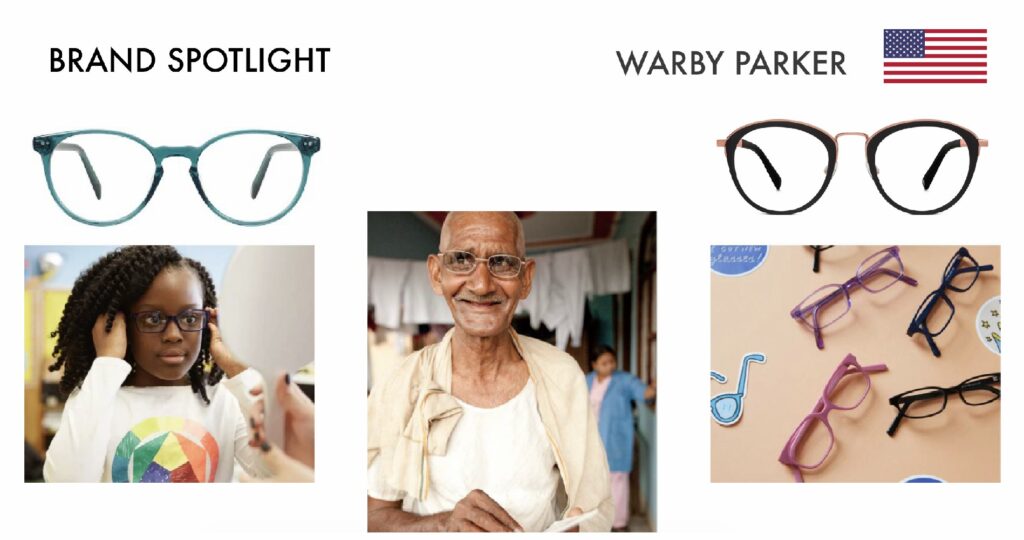
Successful Marketing Examples of Accessories Lifestyle Brands
In the vibrant arena of fashion accessories, captivating marketing strategies can catapult a brand from obscurity to the center stage. Let’s navigate through seven standout strategies from fashion’s creative playbook that masterfully capture the essence of style adornments.
Storytelling: Pandora’s “Unique As We Are” Campaign: The Danish jewelry manufacturer leveraged the power of storytelling with its “Unique As We Are” campaign. By showcasing women from different walks of life, each wearing a Pandora bracelet uniquely styled with charms, they promoted their customizable bracelets as personal storytellers. This emotional and personalized approach underpinned the success of Pandora’s marketing efforts.
Celebrity Partnerships: The Olivia Palermo x BaubleBar Collaboration: The partnership between BaubleBar, known for its affordable fashion jewelry, and style influencer Olivia Palermo, set cash registers ringing. Palermo’s curated collection of BaubleBar pieces provided a sense of exclusivity, driving significant consumer interest. This illustrates how strategic celebrity collaborations can magnify a brand’s visibility and appeal.
Social Responsibility: TOMS Shoes and their One for One model: The heart of TOMS Shoes’ marketing strategy is their commitment to social responsibility. Their “One for One” model, where they donate a pair of shoes for every pair sold, struck a chord with consumers. TOMS leveraged this model in their marketing, effectively blending style and empathy in their messaging.
Influencer Marketing: Daniel Wellington’s Instagram Strategy: Swedish watch brand Daniel Wellington harnessed the power of influencer marketing via Instagram. They collaborated with influencers of varying followership sizes, each posting pictures wearing the brand’s minimalist watches. This strategy not only increased brand visibility but also showcased their watches as lifestyle products, coveted by influencers worldwide.
Virtual Try-On: Warby Parker’s Augmented Reality App: In an era where convenience is king, Warby Parker’s home try-on program was a game-changer. Their innovative use of augmented reality allowed consumers to virtually try on glasses, streamlining the shopping experience and helping the brand stand out in the crowded eyewear market.
Sustainability Marketing: Stella McCartney’s “Stella is..” Campaign: Stella McCartney’s “Stella is…” campaign focused on sustainability, a cornerstone of the brand. Through powerful visuals and strong messaging, they showcased their commitment to eco-friendly fashion. The campaign reinforced McCartney’s brand image as a pioneer in sustainable luxury, attracting eco-conscious consumers.
Limited-Edition Releases: Supreme’s “Drops”: Streetwear brand Supreme has mastered the art of limited-edition releases, or “drops”. By creating a sense of urgency and exclusivity, Supreme’s marketing strategy has cultivated a devoted following, ready to purchase items like their logo beanies or graphic skateboards the moment they’re available.
Each of these strategies exemplifies successful marketing of fashion accessories, demonstrating creativity, consumer understanding, and savvy execution. By telling compelling stories, forging powerful collaborations, embracing responsibility, utilizing technology, and creating exclusivity, brands can carve out a unique space in the crowded accessories market. These methods ensure their products are not just adornments, but lifestyle products that connect with consumers on a deeper level. They paint a broader picture, one where accessories mirror the wearer’s identity, values, and aspirations.
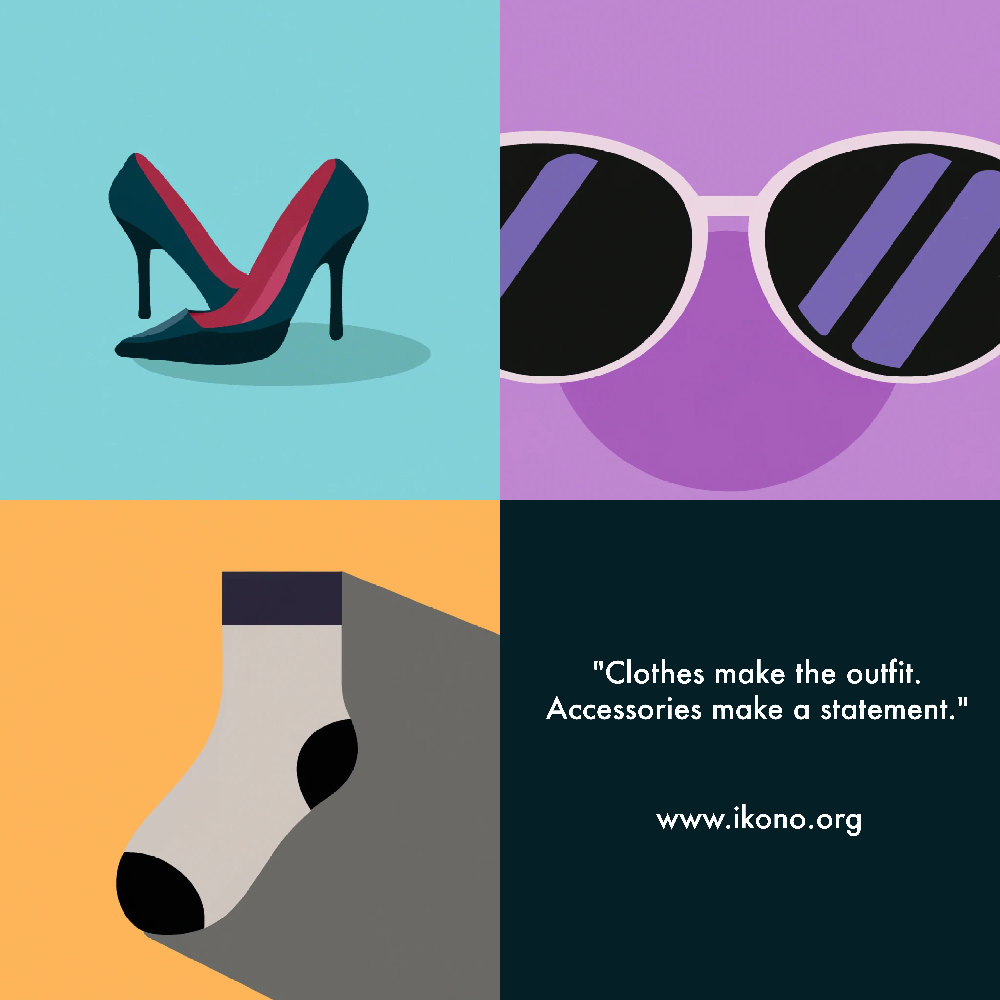
Ikono’s expertise as a marketing agency
Steering the course through the vibrant fashion accessories landscape requires both creativity and strategic acumen. This is where IKONO, a lifestyle brand marketing agency, makes its mark. With a knack for crafting captivating narratives and driving brand promotion, IKONO can bring the unique ethos of a fashion accessories brand to life.
IKONO’s expertise lies in transforming accessories into powerful lifestyle products. They navigate the essence of a brand, turning products into potent symbols of identity and lifestyle. Through resonant messaging and cutting-edge strategies, they ensure that brands connect deeply with their target audience.
In a world where accessories are reflections of consumers’ identity, values, and aspirations, IKONO serves as a beacon for brands aiming to flourish. With their strategic insights and innovative approach, they are instrumental in paving the way for successful marketing within the fashion accessories domain.


